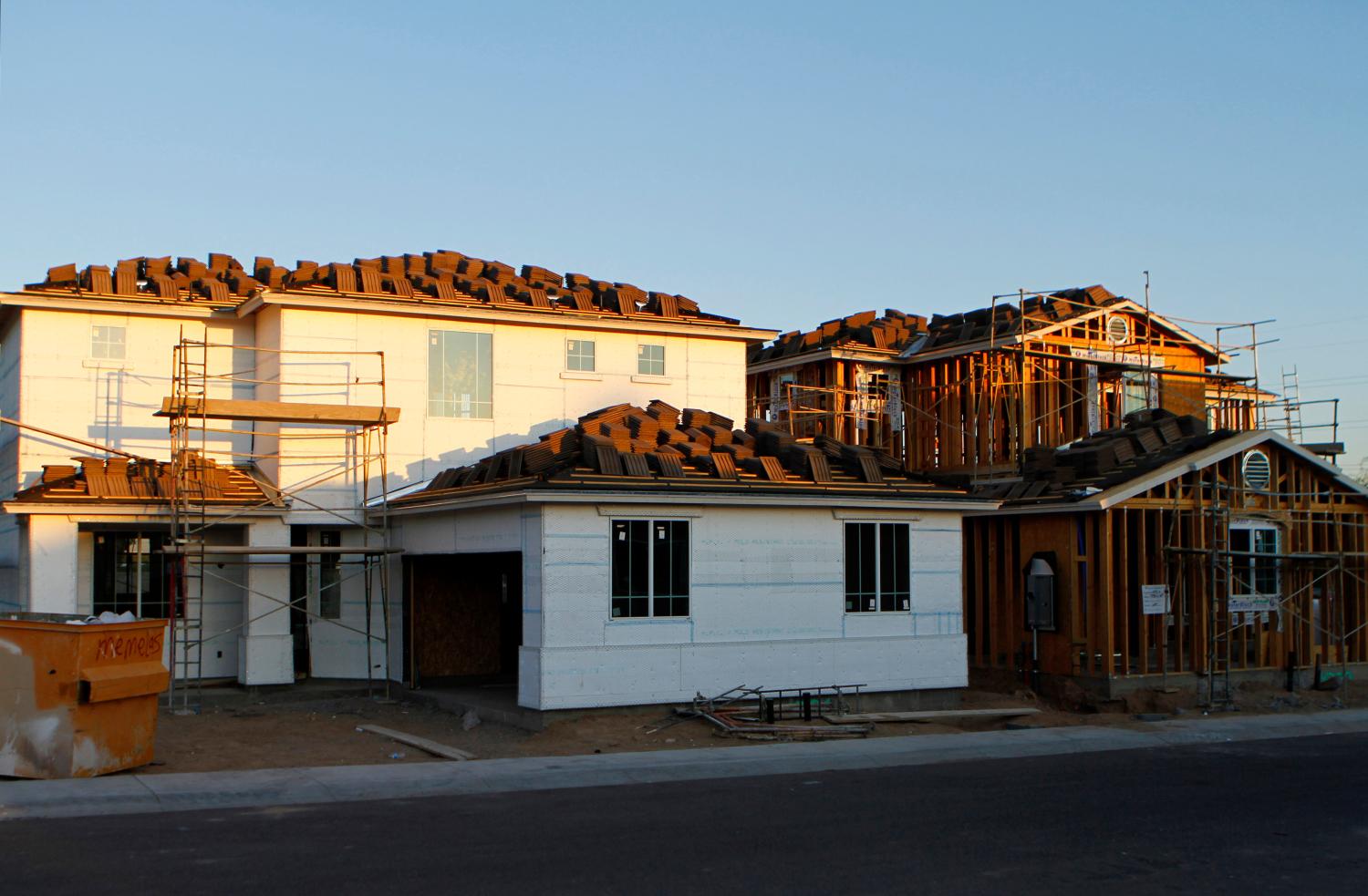Houses are idiosyncratic goods; no two houses are completely identical because the set of characteristics that are embodied in any particular unit are unique to that unit. The hedonic model of individual house prices maps the characteristics of houses to their transaction prices through a regression of sales price (or more often, its logarithm) on the vector of observable housing characteristics. In this way the implicit prices of those embodied characteristics can be estimated as the derivative of price on that characteristic (Rosen, 1974).
One of those characteristics is the age of the dwelling. In their survey of the empirical literature on hedonic pricing, Sirmans, MacPherson and Zietz (2005) note that, among the 125 studies they survey, dwelling age was included 78 times, more often than any other housing characteristic with the exception of interior square footage. In some ways this is puzzling, since age in and of itself is not an indicator of the utility flow from a dwelling, or of the cost of habitation (Rubin, 1993). While age is certainly correlated with increased maintenance costs or outmoded style characteristics, direct measurement of those features would more closely measure the utility or cost characteristics that really matter. Nevertheless, dwelling age has demonstrated itself to be a useful proxy for both physical and stylistic deterioration.
In a regression of log(sales price) on age, entering age in linear form maintains the assumption of a constant depreciation rate over the life of the property (and no vintage effects). But as an empirical matter the relationship between age and property value is seldom so simple; non(log)linear functional forms are usually observed. One reason is that the utility of ownership of a very old property may increase as the house gets very old. The cachet from owning (say) a 100 year old house may have so much value that the hedonic price of such a unit may turn positive. Certain style attributes, characteristic of buildings of a certain vintage, may have increased value in a market, and cause the price-age profile in the estimated hedonic function to be non-monotonic. Moreover, age may serve as a proxy for unobserved characteristics of the neighborhood, such as abundant mature trees or historic status. For this reason, flexible functional forms in building age are often thought to be beneficial in the estimation of hedonic functions. Studies that include age in higher order polynomials include Goodman and Thibodeau(1997) and Coulson and Lahr(2005). Coulson and McMillen (2008) use other nonparametric forms.
But more importantly, the physical depreciation rate may not be constant over time. Like other durable goods there may be steep depreciation at the beginning of a property’s life, and then a flattening out (or other nonlinearities, as discussed above). One age of special interest is age zero, for example as illustrated in the separate reporting of new home prices and the number of newly completed homes by the U.S. Census Bureau. In a recent paper by Kahn and Kok (2014) where they estimate the impact of green labels on homes in California, they also control for alternative measures of age using vintage indicators relative to homes 50 years or older. They report evidence that age of zero increases sales price of homes by 20 to 22% and age of 1 to 2 years increases sales price of homes by 24 to 27%.
Developers and builders, the primary sellers of this class of homes, have a particular interest in the price of new versus existing homes. News stories also illustrate the interest in new homes as distinct from existing homes. In one recent article, Robison (2014) noted a truism that in the Las Vegas housing market “[i]f you want a new home, prepare to drop $100,000 more than you’d shell out for a resale.” Some developers perceive the promulgation of this truism as something to be squelched, for fear of potential buyers would not search in the new home market, and on that account sponsored projects to educate buyers on the difference between unconditional and conditional price differences between new and old homes.
In this paper we closely examine, for what appears to be the first time in the hedonic pricing literature, the new home premium, the putative extra value placed on a home that is on the market for the first time, conditional on the embodied characteristics of a home. In coming to grips with the estimation of the new home premium we face three empirical challenges:
First, what would motivate a systematic difference in the price of new homes relative to existing homes while controlling for observable characteristics? We take the meaning of “new” to be “unused”– that is, not previously occupied, and on that account, of recent construction vintage. This typically entails both positive and negative features of the home, which generally (following Rubin, 1993) are not otherwise captured in the characteristics vector of a hedonic regression. These features often include the ability to choose interior details of the house, such as paint color and floor coverings; newer technologies, such as smart thermostats or more sophisticated alarm systems; immature landscaping, which may be less attractive than established plantings, and so on. Thus the new home premium need not even be positive if the negative aspects of newness dominate the positive aspects.
Second, what is the definition of new? In a standard empirical implementation of a hedonic model there is no emphasis on “new” as such. The age of a property is usually the difference between the year of sale and the year of construction, and new homes are those with age equaling zero (and in fact not usually identified as new). This is not appropriate for our purposes. (1) above suggests that the new home premium should be identified with “unused” or “not previously occupied” rather than by the mere calculation of age. As we discuss in more detail below, we identify “new” in a couple of different ways: by noting whether the seller is a property developer; by identifying whether the parcel is appearing for the first time in the property assessor’s database; by age; by methods which combine these three pieces of data. We will present results from multiple identification paths. Even then we need to confront special cases: if new construction sits vacant for two years before being sold to its first occupant, is it still new? And so on.
Finally, is the premium constant across time, place and property type? There is no reason to believe so. The supply and demand for new homes depends on the particular circumstances. When the number of new properties is small, the premium will be larger, other things equal. There can be certain neighborhoods which because of development restrictions have a small number of new properties, but are highly desirable. The premium might be very large in such circumstances. But it might also vary over time, as credit conditions restrict developers’ ability to borrow against new home sales, and the premium might rise.
We use the Clark County, i.e. Las Vegas, housing market over the time period 1995 to 2014 as a testing ground for estimating the premium (and its variation). This market is ideal for such a study for a couple of reasons. First, and most obviously, the Las Vegas market exhibited wide price swings and large movements in the liquidity of the housing stock.
To illustrate the broad market context of our study, Figure 1 shows the S&P/Case-Shiller Home Sales Price Indices for Las Vegas and the broader Case-Shiller composite index for ten large U.S. cities. [1] The boom was steeper and the freefall in 2008 was more dramatic in Las Vegas than in most other cities.
The boom in home prices was accompanied by dramatic growth in population during the sample period. The population of Clark County grew dramatically over the duration of the data, with an average annual growth rate of 5 percent from 1990 to 2009. The county population more than doubled from about 986,152 in 1994 to more than 2,062,253 in 2013.[2] Second, there was a substantial variation in the amount of new construction over this time period, and across the various Las Vegas submarkets. In many Sunbelt markets, both natural and legal restrictions on development are binding and the amount of new construction minimal. This is not the case in the Las Vegas housing market. Third, we have a very large sample. As noted, we have a long span of data, and almost 800,000 property transactions. The large sample permits us to estimate the variation in the premium in multiple ways. Moreover, we can estimate the conditional relationship between age, newness, and price flexibly.
[1]Data for this figure are the S&P/Case-Shiller Seasonally Adjusted Home Price Index Levels, downloaded April 7, 2015, from http://www.spindices.com/index-family/real-estate/sp-case-shiller.
[2] See http://www.clarkcountynv.gov/depts/comprehensive_planning/demographics/pages/default.aspx last accessed on April 14, 2015.
The Brookings Institution is committed to quality, independence, and impact.
We are supported by a diverse array of funders. In line with our values and policies, each Brookings publication represents the sole views of its author(s).



